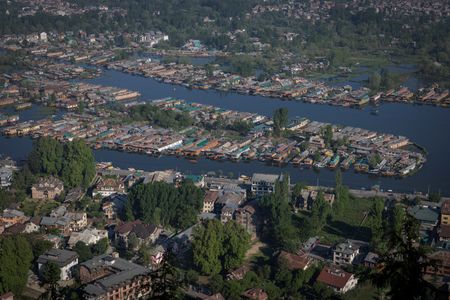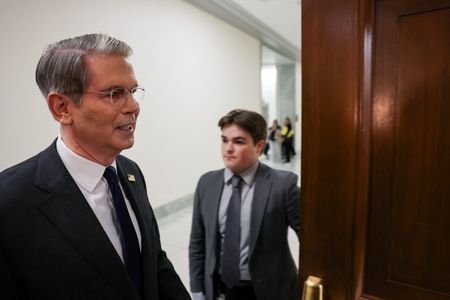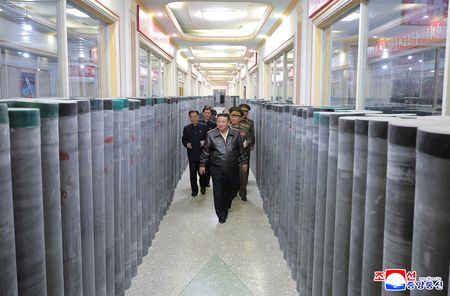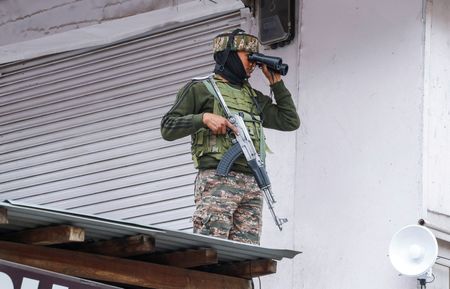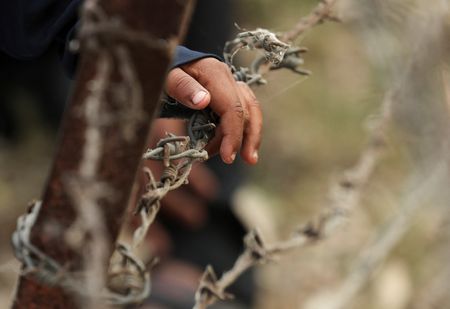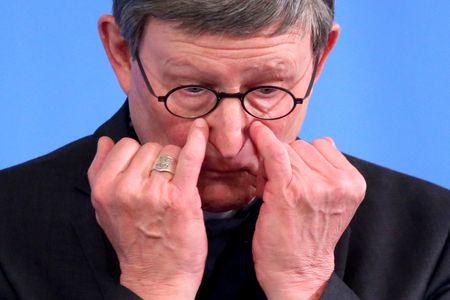NEW DELHI (Reuters) -India launched attacks in the early hours of May 7 on what it said were “terrorist camps” in Pakistan, including in the disputed territory of Kashmir. The strike followed the killing of 26 men, mostly tourists, in Indian Kashmir last month by Islamist assailants that India blamed on Pakistan.
The Muslim-majority Himalayan region of Kashmir is claimed by both India and Pakistan, and has been the site of multiple wars, insurgency and diplomatic standoffs.
Here is a look at the region, its history, and why it continues to be a source of tension between the two countries:
PARTITION AND ACCESSION
After partition of the subcontinent in 1947 following independence from British rule, Kashmir was expected to become part of Pakistan, as with other Muslim-majority regions. Its Hindu ruler wanted it to stay independent but, faced with an invasion by Muslim tribesmen from Pakistan, acceded to India in October 1947 in return for help against the invaders.
GEOGRAPHY AND DEMOGRAPHICS
Kashmir ended up divided among Hindu-majority India, which governs the Kashmir Valley, Jammu, and Ladakh; Islamic Pakistan, which controls Azad Kashmir (“Free Kashmir”) and the Northern Areas; and China, which holds Aksai Chin.
Indian-administered Kashmir has a population of around 7 million, of whom nearly 70% are Muslim.
ARTICLE 370
A provision of the Indian constitution, Article 370, provided for partial autonomy for Jammu and Kashmir. It was drafted in 1947 by the then prime minister of the state, Sheikh Abdullah, and accepted by India’s first prime minister Jawaharlal Nehru. Although intended as temporary, it was included in India’s Constitution in 1949 by the constituent assembly.
WARS AND MILITARY STANDOFFS
India and Pakistan have fought three wars since independence, two of them over Kashmir, in 1947 and 1965. A third in 1971 led to the creation of Bangladesh. In 1999, they clashed again in the Kargil region in what was described as an undeclared war. A U.N.-brokered ceasefire line, the Line of Control, now divides the region.
THE INSURGENCY
Many Muslims in Indian Kashmir have long resented what they see as heavy-handed rule by India. In 1989, that bubbled over into an insurgency by Muslim separatists. India poured troops into the region and tens of thousands of people have been killed.
India accuses Pakistan of arming and training militants, which Islamabad denies, saying it offers only moral and diplomatic support.
REVOKING OF SPECIAL STATUS
In August 2019, Prime Minister Narendra Modi’s government revoked Kashmir’s semi-autonomous status in a move it said would better integrate the region with the rest of the country. The state was reorganised into two federally administered union territories – Jammu and Kashmir, and Ladakh. Pakistan strongly objected, downgrading diplomatic ties with India.
RECENT YEARS
Modi says his 2019 decision brought normalcy to Kashmir after decades of bloodshed. Violence has tapered off in recent years, according to Indian officials, with fewer large-scale attacks and rising tourist arrivals. Targeted killings of civilians and security forces, however, were still reported.
2024 ELECTIONS
In 2024, Jammu and Kashmir held its first local elections since the 2019 revocation of autonomy. Several newly elected lawmakers urged a partial restoration of Article 370. Key regional parties boycotted or criticised the vote, saying the winners would not get any real political power.
(Complied by Surbhi Misra; Editing by Sudipto Ganguly, Raju Gopalakrishnan and Rosalba O’Brien)

